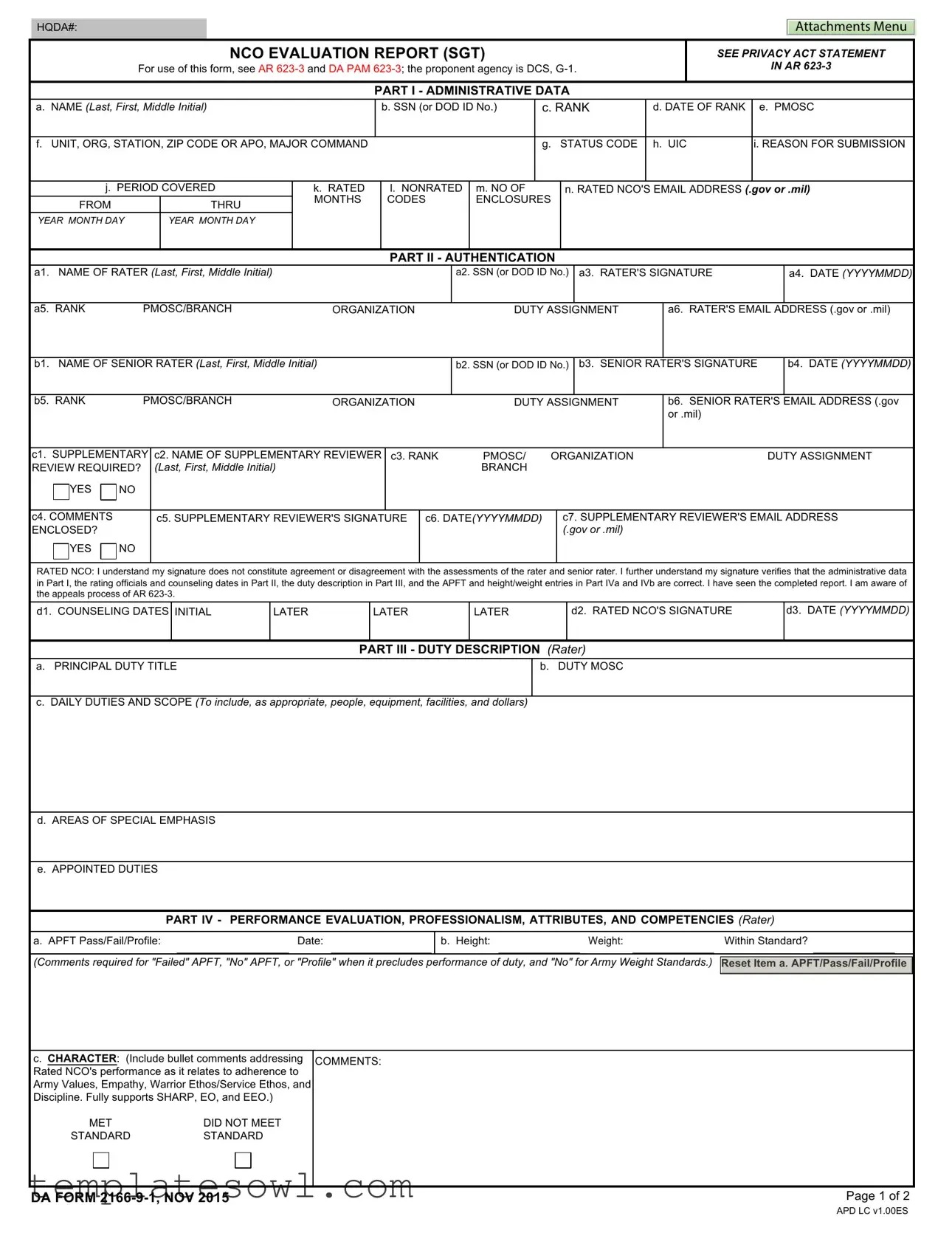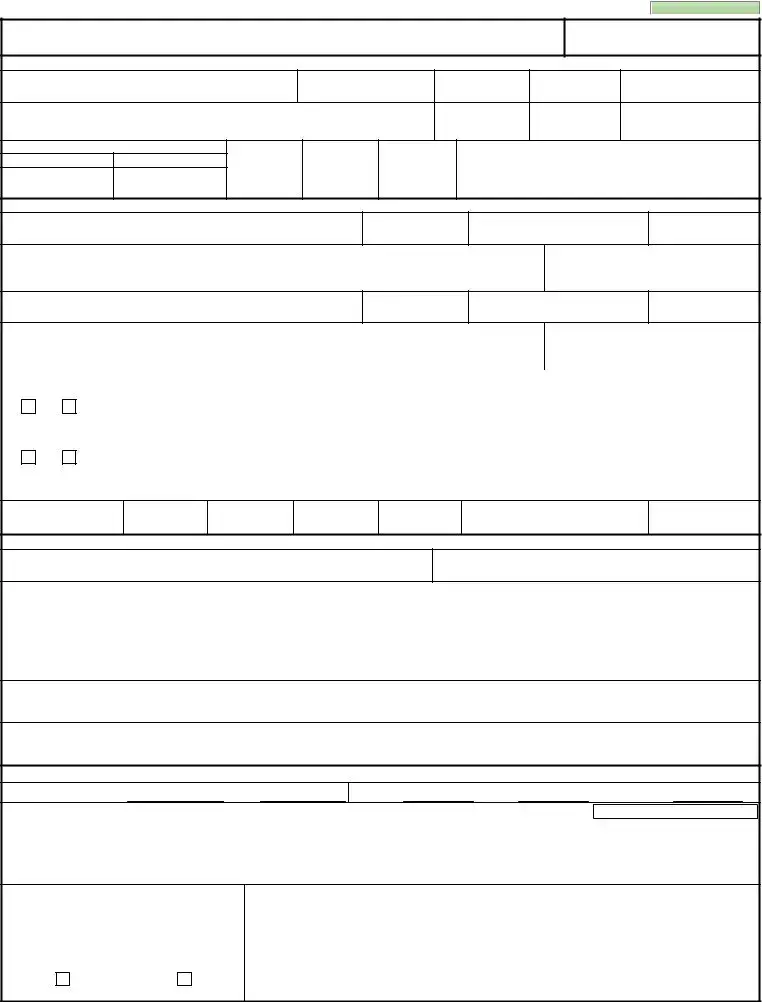What is the purpose of the DA 2166 9 1 form?
The DA 2166 9 1 form is used to evaluate the performance of Non-Commissioned Officers (NCOs) at the rank of Sergeant. This evaluation provides a structured means to assess an NCO's effectiveness, leadership, and potential for future assignments within the Army.
Who is responsible for completing the DA 2166 9 1 form?
The responsibility for completing the form lies primarily with the rater, who is typically the immediate supervisor of the rated NCO. The senior rater, often a higher-level supervisor, is also involved in the evaluation process to provide a broader perspective on the NCO's performance.
What information is required in Part I of the form?
Part I collects administrative data about the rated NCO, including their name, Social Security Number or DOD ID, rank, date of rank, and organization details. Additional details like the reason for submission and the evaluation period must also be included.
What does the Rated NCO need to understand regarding their signature?
The Rated NCO's signature verifies that all administrative data is correct and that they have seen the completed report. However, it does not indicate agreement with the evaluations made by the rater or senior rater. The Rated NCO should also be aware of the appeals process outlined in AR 623-3.
How are performance evaluations carried out in Part IV?
Part IV includes several categories such as character, presence, intellect, leads, develops, and achieves. The rater evaluates each category as "met" or "did not meet standard," supported by comments that provide specific feedback regarding the NCO's performance in these areas.
What is the significance of the Senior Rater's comments?
The Senior Rater's comments are crucial as they provide an overall assessment of the rated NCO's potential compared to others in the same grade. This includes selecting a classification of the NCO's potential, which can influence future assignments and career advancement.
Are there any privacy concerns related to the DA 2166 9 1 form?
Yes, the form contains sensitive personal information, such as the NCO's Social Security Number. Therefore, it is essential to handle the form in accordance with the Privacy Act of 1974, ensuring that information is kept confidential and secure.
Can the DA 2166 9 1 form be appealed?
Yes, there is an appeals process available for Rated NCOs who disagree with their evaluation. This process is outlined in AR 623-3 and allows for the review of the evaluation if the NCO believes there are valid grounds for an appeal.
How often should the DA 2166 9 1 form be completed?
The DA 2166 9 1 form should be completed at the end of the evaluation period designated for the NCO, typically annually or when there is a change in duty assignments. Consistent evaluations help maintain an accurate account of the NCO's performance over time.


